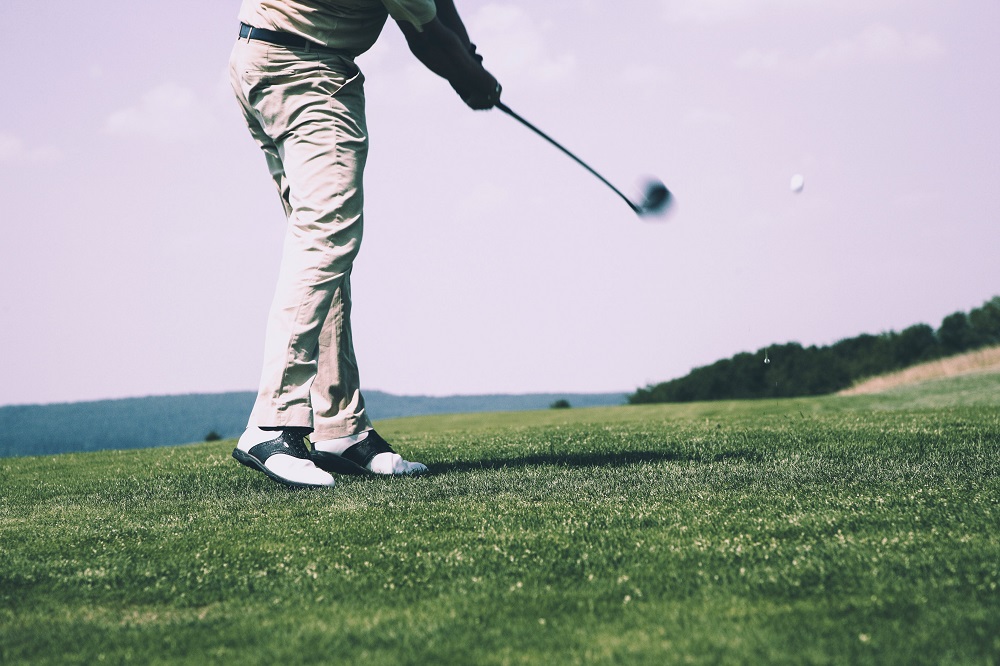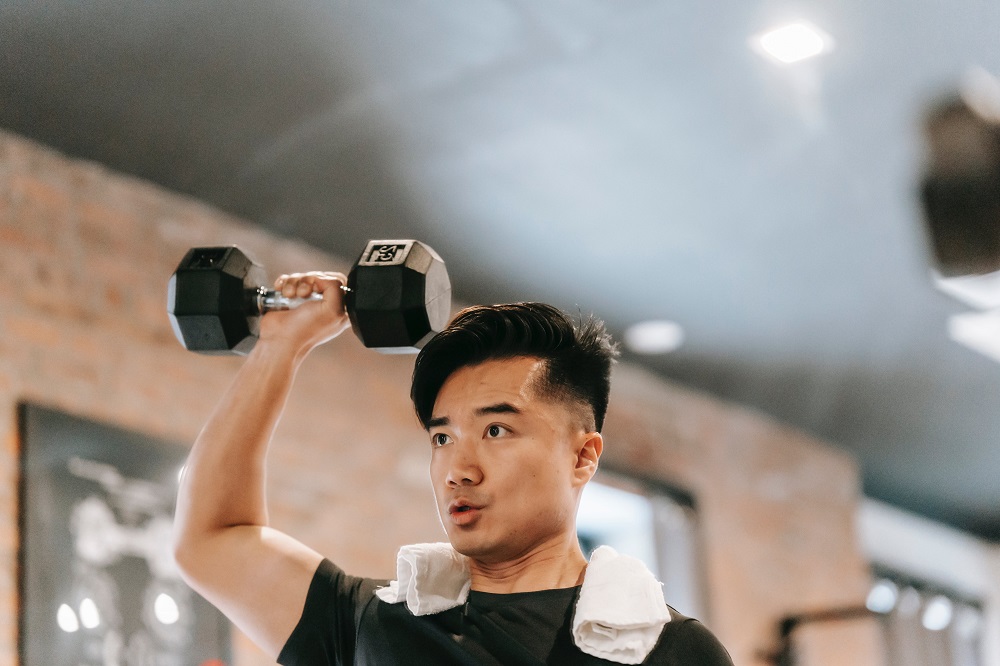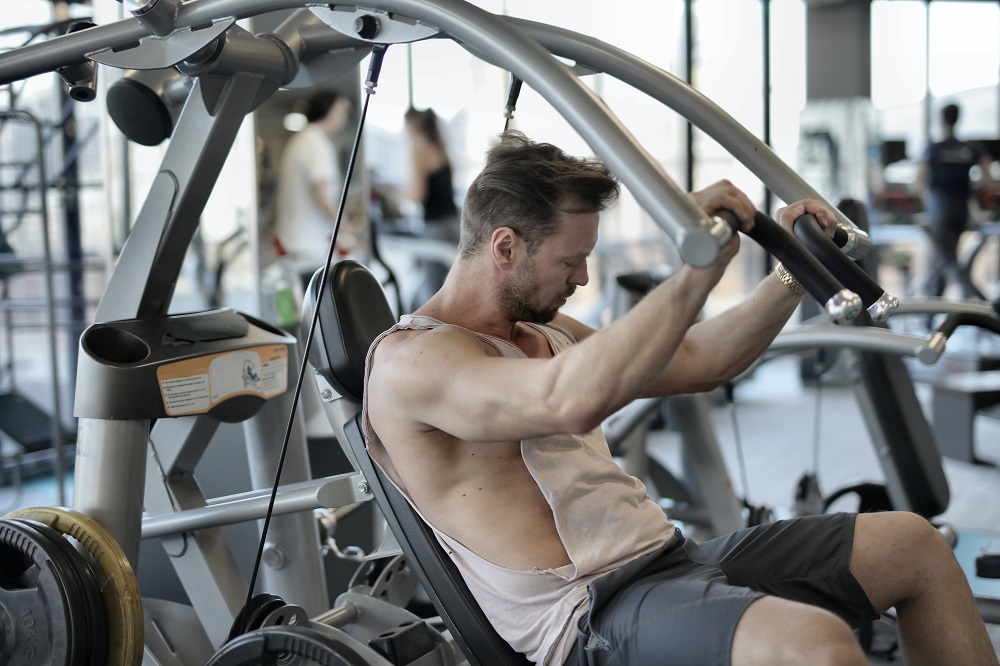Golf is a sport that demands precision, finesse, and, above all, a well-executed swing. The shoulders’ strength and flexibility is crucial for a perfect swing. Many people overlook this aspect. This blog will delve into the symbiotic relationship between shoulder strength and golf performance. The goal is to provide golf enthusiasts with valuable insights. The insights focus on rotator cuff exercises in golf shoulder workouts.

The Shoulder’s Role in Golf
Knowing how important shoulders are in golf is crucial. When you swing a golf club, your shoulders do a lot of work. They’re involved in the backswing, downswing, and follow-through, moving in a way that affects where the ball goes, how accurate you are, and how much power you put into the shot.
Importance of Shoulder Strength
Shoulder strength is not just about raw power; it’s about control, stability, and injury prevention. Golfers with strong shoulders can maintain a consistent swing easily. They can control the club with precision and reduce injury risks. Poor shoulder strength can lead to injuries.
Aim of the Blog
The primary aim of this blog is to shed light on the power of incorporating targeted shoulder workouts into your golf training routine. We will explore the benefits of strong shoulders. We will delve into key golf shoulder stretches with a focus on the rotator cuff. We will provide practical guidance on seamlessly integrating these workouts into your overall golf fitness regimen.
Understanding the Role of Shoulders in Golf

Shoulder Mechanics in a Golf Swing
To comprehend the significance of shoulder strength, it’s crucial to break down the mechanics of a golf swing. The shoulders initiate and guide the swing, determining the angle and speed of the clubhead. A smooth and effective swing requires coordination among several muscles. These muscles include the rotator cuff, deltoids, and trapezius.
Common Challenges Faced by Golfers
Many golfers encounter challenges related to shoulder mobility, flexibility, and strength. Limited shoulder mobility can hinder the range of motion needed for a full swing, while weak shoulder muscles may result in inconsistencies and a lack of control during the swing.
Benefits of Strong Shoulders in Golf

Improved Swing Mechanics and Consistency
Strong shoulders contribute to more controlled and consistent swing mechanics. Maintaining a stable and repeatable swing motion is crucial for accuracy and precision on the golf course.
Enhanced Club Control and Accuracy
Shoulder strength directly influences the golfer’s ability to control the club. A strong and stable shoulder foundation enables better control over the clubhead, leading to improved accuracy and shot placement.
Reduction of Injury Risk
Engage in shoulder workouts. Focus on the rotator cuff. This reduces injury risk. A strong rotator cuff stabilizes the shoulder joint during golf swings, reducing the risk of strains and tears caused by repetitive movements.
Key Golf Shoulder Exercises

Shoulder Mobility Drills
Flexibility is a key component of shoulder health and functionality. Incorporating shoulder mobility drills into your warm-up routine can enhance the range of motion, allowing for a more fluid and unrestricted swing.
Arm Circles
Performing gentle arm circles in clockwise and counterclockwise directions helps loosen the shoulder joints and improves overall mobility.
Shoulder Rolls
Roll your shoulders forward and backward. This helps release tension and promotes better shoulder flexibility. Do this before hitting the greens.
Rotator Cuff Strengthening
The rotator cuff is a group of muscles and tendons surrounding the shoulder joint. Strengthening these muscles is crucial for maintaining shoulder stability and preventing injuries.
1. External Rotation with Resistance Band
Using a resistance band, anchor it at waist height and hold one end with your outside hand. Keeping your elbow at a 90-degree angle, rotate your arm outward against the resistance.
2. Internal Rotation with Dumbbell
Sitting or standing, hold a dumbbell in the hand of the arm you are working on. Keep your elbow close to your body and rotate your arm inward against the resistance.
Deltoid and Trapezius Activation

Strengthening the deltoid and trapezius muscles contributes to overall shoulder stability and control.
1. Dumbbell Lateral Raises
Hold a dumbbell in each hand, arms by your sides. Lift both arms outward to shoulder height, engaging the deltoids. Lower the weights back down with control.
2. Shrugs
With a dumbbell in each hand, shrug your shoulders upward toward your ears, engaging the trapezius muscles. Lower the shoulders back down in a controlled manner.
Incorporating Shoulder Workouts into Your Golf Routine

Establishing a Golf-Specific Shoulder Workout Routine
To design a shoulder workout for golf, balance mobility, strength, and flexibility. Aim for a routine that addresses the specific demands of a golf swing.
Balancing Shoulder Exercises with Overall Fitness Training
While shoulder workouts are crucial, maintaining overall fitness is equally important for golfers. Incorporate cardiovascular exercises, core strengthening, and flexibility training to create a well-rounded fitness routine.
Tips for Gradually Introducing New Exercises
If you are new to shoulder workouts, starting gradually is essential. Begin with lighter weights and lower intensity, gradually increasing as your strength and endurance improve. Consistency is key.
Conclusion
To sum up, let’s go back to the main ideas. We talked about how doing shoulder workouts, especially ones that work on the rotator cuff, can help your golf performance. I suggest you think about adding these golf shoulder exercises to your routine. They bring long-lasting benefits and can really make your game better. It’s not just about playing golf; it’s about enjoying and feeling proud of getting better at doing strong and controlled golf swings. If you understand and stick to the whole idea of staying fit for golf, you’ll keep getting better at golf over time.